|
Books Should Be Free Loyal Books Free Public Domain Audiobooks & eBook Downloads |
|
|
Books Should Be Free Loyal Books Free Public Domain Audiobooks & eBook Downloads |
|
Short Stories |
|---|
|
Book type:
Sort by:
View by:
|
By: Joseph Jacobs (1854-1916) | |
|---|---|
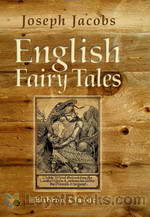 English Fairy Tales
English Fairy Tales
Jack the Giant-Killer, Tom Thumb, Goldilocks and The Three Bears, Henny Penny, Dick Whittington, The Three Little Pigs, Red Riding Hood and a host of immortal characters are found in this delightful collection of English Fairy Tales by Joseph Jacobs. The book made its first appearance in 1890 and has remained a firm favorite with both young and old ever since. Fairy tales have traditionally emanated from France and Germany. The famous compilations by La Fontaine and the Brothers Grimm have overshadowed children's literature for centuries... | |
 Indian Fairy Tales
Indian Fairy Tales
This book is a fine collection of Indian fairy tales, some are folklore, some are from the Jataka tales, and some from panchatantra. | |
By: Joseph Lewis French (1858-1936) | |
|---|---|
 Masterpieces of Mystery In Four Volumes Mystic-Humorous Stories
Masterpieces of Mystery In Four Volumes Mystic-Humorous Stories
| |
 Masterpieces of Mystery, Vol. 1 (of 4) Ghost Stories
Masterpieces of Mystery, Vol. 1 (of 4) Ghost Stories
| |
 Masterpieces of Mystery Riddle Stories
Masterpieces of Mystery Riddle Stories
| |
By: Joseph Paul Martino (1931-) | |
|---|---|
 Pushbutton War
Pushbutton War
| |
By: Joseph Samachson (1906-1980) | |
|---|---|
 Dead Man's Planet
Dead Man's Planet
| |
 Runaway
Runaway
| |
 The Hunters
The Hunters
| |
 Divinity
Divinity
| |
By: Joseph Tinker | |
|---|---|
 Tinker's Dam
Tinker's Dam
| |
By: Joseph Wesley | |
|---|---|
 Upstarts
Upstarts
| |
By: Josephine Daskam Bacon (1876-1961) | |
|---|---|
 In the Border Country
In the Border Country
| |
By: Kate Douglas Smith Wiggin (1856-1923) | |
|---|---|
 The Village Watch-Tower
The Village Watch-Tower
| |
 Homespun Tales
Homespun Tales
| |
 The Flag-Raising
The Flag-Raising
| |
By: Katherine MacLean (1925-) | |
|---|---|
 Games
Games
| |
 The Carnivore
The Carnivore
| |
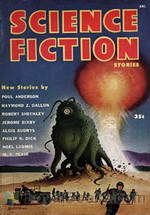 The Natives
The Natives
| |
By: Katherine Mansfield (1888-1923) | |
|---|---|
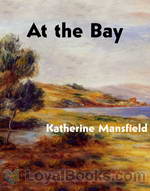 At The Bay
At The Bay
Katherine Mansfield was a prominent Modernist writer of short fiction, and one of New Zealand’s best-known authors. “At the Bay” is a story from her collection The Garden Party. | |
 In a German Pension
In a German Pension
The first collected volume of short stories of the New Zealand modernist. Inspired by her own travels, Mansfield begins to refine her craft with a series of tales which depict German life at the brink of the first world war. (Introduction by S. Kovalchik) | |
By: Kathleen Thompson Norris (1880-1966) | |
|---|---|
 Poor, Dear Margaret Kirby
Poor, Dear Margaret Kirby
| |
By: Keith Laumer (1925-1993) | |
|---|---|
 Gambler's World & The Yillian Way
Gambler's World & The Yillian Way
Here are two stores starring the always unconventional Terrestrial Diplomat, Retief. As a diplomat, Retief does not always follow procedure. Well the truth is that he almost never follows procedure but somehow his wit and strength manage to salvage most situations from the bumbling of his superiors. His sardonic approach to inter galactic negotiations in these two stories is a delight to hear. Despite everything, he manages to save the day and come out on top. | |
 The Yillian Way
The Yillian Way
| |
By: Kenneth Harmon | |
|---|---|
 The Passenger
The Passenger
| |
By: Kevin Scott | |
|---|---|
 Quiet, Please
Quiet, Please
| |
By: Kris Neville (1925-1980) | |
|---|---|
 General Max Shorter
General Max Shorter
| |
 New Apples in the Garden
New Apples in the Garden
| |
By: Kurt Vonnegut (1922-2007) | |
|---|---|
 2 B R 0 2 B
2 B R 0 2 B
In this chilling short-story by a master of the craft, Kurt Vonnegut creates a fictional world of the future where life and death are no longer matters of individual choice or destiny. The title refers to the famous quote from Hamlet, “To be or not to be....” with “0” being pronounced as “naught.” It also refers to the eternal dilemma of life and death that face every human being at some point in their lives. Written in 1962 it is set in some unspecified time in the future, when earth has become a Utopia... | |
 The Big Trip Up Yonder
The Big Trip Up Yonder
| |
By: L. Adams Beck (1862-1931) | |
|---|---|
 The ninth vibration and other stories
The ninth vibration and other stories
This is a collection of the following short stories: The Ninth Vibration -- The Interpreter : A Romance of the East -- The Incomparable Lady : A Story of China with a Moral -- The Hatred of the Queen : A Story of Burma -- Fire of Beauty -- The Building of the Taj Majal -- How Great is the Glory of Kwannon! -- The Round-Faced Beauty. Many of them are romantic, some of them are fantasy and others are occult fiction.(Introduction by Linda Andrus) | |
By: L. Frank Baum (1856-1919) | |
|---|---|
 Little Wizard Stories of Oz
Little Wizard Stories of Oz
The “Little Wizard Stories of Oz” are six short stories written by L. Frank Baum in 1913. By all accounts, Baum intended to finish the Oz series with “The Emerald City of Oz,” published in 1910. Following that, he attempted to write non-Oz books, publishing “The Sea Fairies” in 1911 and “Sky Island” in 1912. But, (as Baum himself laments in the prefaces of many of his Oz books,) his “little tyrants” were only interested in hearing more Oz stories. So in 1913, he returned to writing about Oz, putting out both The “Little Wizard Stories” and “The Patchwork Girl of Oz” that year... | |
 American Fairy Tales
American Fairy Tales
This collection of fantasy stories was originally serialized in regional newspapers, prior to being published as a complete volume. The stories, as critics have noted, lack the high-fantasy aspect of the best of Baum’s work, in Oz or out. With ironic or nonsensical morals attached to their ends, their tone is more satirical, glib, and tongue-in-cheek than is usual in children’s stories; the serialization in newspapers for adult readers was appropriate for the materials. (Introduction by Wikipedia and Matthew Reece) | |
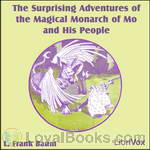 The Surprising Adventures of the Magical Monarch of Mo and His People
The Surprising Adventures of the Magical Monarch of Mo and His People
The Magical Monarch of Mo is a set of stories about the titular king, his queen, and his royal children. The stories are uproariously funny, dealing with topics as absurd as a man losing his temper who then tries to find it, an evil midget who steals a princess's big toe, and an entire city filled with highly civilized monkeys! Join the Monarch and all his friends for a rollicking adventure, filled with fun for the whole family! | |
By: L. Leslie Brooke (1862-1940) | |
|---|---|
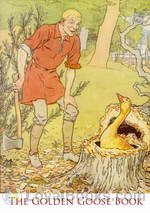 The Golden Goose Book
The Golden Goose Book
A charming little book full of the most gorgeous illustrations. We see a number of stories in which kindness is rewarded and selfishness is punished but Brooke squeezes a number of intriguing and quite bizarre twists and turns into the story so it is not nearly so predictable as you might imagine. Victorian moral fairy tales from a delightfully inventive mind. | |
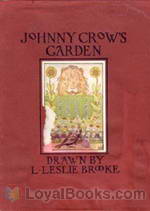 Johnny Crow's Garden
Johnny Crow's Garden
A beautifully illustrated children’s picture book featuring Johnny Crow who made a garden in which a variety of animals do bizarre things in rhyme. | |
By: L. Major Reynolds | |
|---|---|
 Holes, Incorporated
Holes, Incorporated
| |
 Such Blooming Talk
Such Blooming Talk
| |
By: L. Taylor (Lucile Taylor) Hansen (1897-1976) | |
|---|---|
 The Undersea Tube
The Undersea Tube
| |
By: Lafcadio Hearn (1850-1904) | |
|---|---|
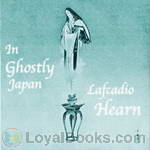 In Ghostly Japan
In Ghostly Japan
This collection of 14 stories collected by Lafcadio Hearn, contains Japanese ghost stories, but also several non-fiction pieces. Hearn tries to give a glimpse into the customs of the Japanese, by giving examples of Buddhist Proverbs and explaining the use of incense and the nation wide fascination with poetry. Furthermore, he has again translated several hair-rising ghost stories, like "A Passional Karma" about the truly undying love of a young couple. | |
 Kwaidan: Stories and Studies of Strange Things
Kwaidan: Stories and Studies of Strange Things
Most of the following Kwaidan, or Weird Tales, have been taken from old Japanese books,— such as the Yaso-Kidan, Bukkyo-Hyakkwa-Zensho, Kokon-Chomonshu, Tama-Sudare, and Hyaku-Monogatari. Some of the stories may have had a Chinese origin: the very remarkable "Dream of Akinosuke," for example, is certainly from a Chinese source. But the story-teller, in every case, has so recolored and reshaped his borrowing as to naturalize it… One queer tale, "Yuki-Onna," was told me by a farmer of Chofu, Nishitama-gori, in Musashi province, as a legend of his native village... | |
By: Larry T. Shaw (1924-1985) | |
|---|---|
 Stairway to the Stars
Stairway to the Stars
| |
By: Laura F. [Editor] Freck | |
|---|---|
 Short Stories of Various Types
Short Stories of Various Types
| |
By: Laurence M. Janifer (1933-2002) | |
|---|---|
 Lost in Translation
Lost in Translation
| |
 The Man Who Played to Lose
The Man Who Played to Lose
| |
 Sight Gag
Sight Gag
| |
 Mex
Mex
| |
By: Laurence Oliphant (1829-1888) | |
|---|---|
 Stories By English Authors: Italy
Stories By English Authors: Italy
| |
By: Lee Archer | |
|---|---|
 Lease to Doomsday
Lease to Doomsday
| |
By: Leo Tolstoy (1828-1910) | |
|---|---|
 What Men Live By and Other Tales
What Men Live By and Other Tales
Although Leo Tolstoy (1828-1910) was a wealthy landowner, in his later life he had what was considered a “religious awakening.” This experience went on to inform his writing and his lifestyle in profound ways. His views transcended the specifics of religion, as known in his day – so much so he came to be a helpful guide both to Mohandas Gandhi and to Dr. Martin Luther King Jr. The four stories in this collection ask profound questions and gently supply helpful, non-dogmatic hints to their... | |
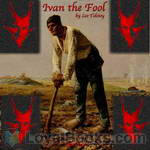 Ivan the Fool
Ivan the Fool
Written after Tolstoy suffered a spiritual crisis, Ivan the Fool is a fairy tale that offers children instruction in how to live rightly, simply, and generously. The story emphasizes the destructive aspects of materialism and militarism while idealizing manual labor and the peasant life. (Introduction by Dorlene Kaplan) | |
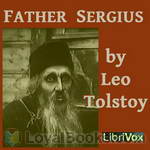 Father Sergius
Father Sergius
Prince Stepan Kasatsky experiences a disappointment with his fiancé and decides to become a monk! There is a story line, but beneath it, Father Sergius struggles to find peace and, if not happiness, then at least contentment. But he is always disillusioned and ultimately unsatisfied. Only in the end does he find his way by letting go of what he struggled to attain all his life, i.e. to be better than everyone else in whatever he did, and settle for the mundane. | |
By: Leonid Nikolayevich Andreyev (1871-1919) | |
|---|---|
 Little Angel and Other Stories
Little Angel and Other Stories
This is a volume of short works by Leonid Andreyev. - Summary by Carolin | |
By: Les Collins | |
|---|---|
 Question of Comfort
Question of Comfort
| |
By: Lester Del Rey (1915-1993) | |
|---|---|
 Dead Ringer
Dead Ringer
| |
By: Lillian Nixon Lawrence | |
|---|---|
 Little Dramas for Primary Grades
Little Dramas for Primary Grades
37 short and very short plays for young children - David O Readers: Linette Geisel: Camel, Big Black Dog, First Child, Camel, Grandma, Red Fox, Child, First Pig, Mrs. Dove, Third Chick, Littlest Fir Tree, French Doll, Mary, Camel, Sparrow, Mrs. Sparrow, Sheep, Little Tree, Columbine, Rose, Lobster, Jellyfish, Flowers, Sanja, Tree, Camel Tomas Peter: Lion, Odd Man, Lion, Fisherman, Hans, Fifth Pig, Mr. Jay, First Chick, Santa Claus, Tin Soldier, Old Year, Man, Thrush, Mr. Sparrow, Cow, Woodcutter,... | |
By: Lily Dougall (1858-1923) | |
|---|---|
 Dozen Ways of Love
Dozen Ways of Love
This is a collection of (each in their own way) romantic short stories by Lily Dougall. | |
By: Lloyd Osbourne (1868-1947) | |
|---|---|
 Wild Justice: Stories of the South Seas
Wild Justice: Stories of the South Seas
| |
By: Lord Dunsany (1878-1957) | |
|---|---|
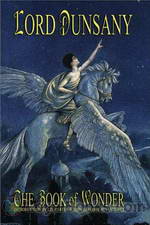 The Book of Wonder
The Book of Wonder
“Come with me, ladies and gentlemen who are in any wise weary of London: come with me: and those that tire at all of the world we know: for we have new worlds here.” – Lord Dunsany, the preface to “The Book of Wonder” | |
 Time and the Gods
Time and the Gods
Lord Dunsany (24 July 1878 – 25 October 1957) was a London-born Anglo-Irish writer and dramatist notable for his work in fantasy. He was influenced by Algernon Swinburne, who wrote the line “Time and the Gods are at strife” in his 1866 poem “Hymn to Proserpine”, as well as by the fairy tales of the Brothers Grimm and Hans Christian Andersen. In turn, Dunsany’s influence was felt by H. P. Lovecraft and Ursula K. Le Guin. Arthur C. Clarke corresponded with Dunsany between 1944 and 1956. Those letters are collected in the book Arthur C. Clarke & Lord Dunsany: A Correspondence. Time and the Gods, a series of short stories written in a myth-like style, was first published in 1906. | |
 Fifty-One Tales
Fifty-One Tales
Very brief, well-crafted stories, many having surprise endings, all steeped in the dye of myth and calling to every reader's neglected imagination. | |
By: Lord Dunsany (1878-1957) | |
|---|---|
 Gods of Pegāna
Gods of Pegāna
"The Gods of Pegāna" is the first book by Anglo-Irish fantasy writer Lord Dunsany, published on a commission basis in 1905... The book is a series of short stories linked by Dunsany's invented pantheon of deities who dwell in Pegāna. It was followed by a further collection "Time and the Gods" and by some stories in "The Sword of Welleran and Other Stories". | |
 Dreamer's Tales
Dreamer's Tales
"A Dreamer's Tales" is the fifth book by Irish fantasy writer Lord Dunsany, considered a major influence on the work of H. P. Lovecraft, J. R. R. Tolkien, Ursula K. Le Guin, Michael Moorcock and others. "A Dreamer's Tales" is a collection of sixteen fantasy short stories, and varies from the wistfulness of "Blagdaross" to the horrors of "Poor Old Bill" and "Where the Tides Ebb and Flow" to the social satire of "The Day of the Poll." (text from Wikipedia articles on Lord Dunsany and "A Dreamer's Tales") | |
By: Lord Redesdale (1837-1916) | |
|---|---|
 Tales of Old Japan
Tales of Old Japan
Tales of Old Japan by Lord Redesdale is a collection of short stories focusing on Japanese life of the Edo period (1603 - 1868). It contains a number of classic Japanese stories, fairy tales, and other folklore; as well as Japanese sermons and non-fiction pieces on special ceremonies in Japanese life, such as marriage and harakiri, as observed by Lord Redesdale. The best know story of these is "The Forty-seven Ronins" a true account of samurai revenge as it happened at the beginning of 18th century Japan... | |
By: Lorimer Stoddard (1864-1901) | |
|---|---|
 The Indian's Hand 1892
The Indian's Hand 1892
| |
By: Lou Tabakow (1915?-1981) | |
|---|---|
 Faithfully Yours
Faithfully Yours
| |
By: Louis Ginzberg (1873-1953) | |
|---|---|
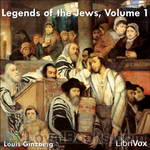 Legends of the Jews
Legends of the Jews
Rabbi Louis Ginzberg was one of the outstanding Talmudists of the twentieth century. He was born on November 28, 1873, in Kovno, Lithuania; he died on November 11, 1953, in New York City. Ginzberg taught at the Jewish Theological seminary from 1903 to 1953. For 50 years, he trained two generations of Conservative Rabbis.The Legends of the Jews is an epic 7-volume compilation of traditional Jewish stories loosely related to the Bible. Volumes 1-4 contain the stories, while volumes 5-7 contain Ginzberg’s notes and commentary... | |
By: Louisa May Alcott (1832-1888) | |
|---|---|
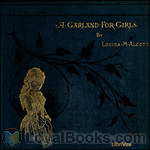 A Garland For Girls
A Garland For Girls
“These stories were written for my own amusement during a period of enforced seclusion. The flowers which were my solace and pleasure suggested titles for the tales and gave an interest to the work. If my girls find a little beauty or sunshine in these common blossoms, their old friend will not have made her Garland in vain.” – L.M. Alcott, September, 1887 | |
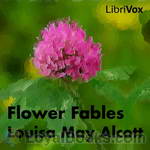 Flower Fables
Flower Fables
Flower Fables is Louisa May Alcott’s first book, penned at 16 for Ralph Waldo Emerson’s daughter, Ellen. | |
 A Modern Cinderella Or, the Little Old Shoe and Other Stories
A Modern Cinderella Or, the Little Old Shoe and Other Stories
| |
 Kitty's Class Day and Other Stories
Kitty's Class Day and Other Stories
| |
 Spinning-Wheel Stories
Spinning-Wheel Stories
A group of stories-within-a-story, told in the classic Louisa May Alcott style. "I've a little cold," said the old lady, "and am too hoarse for talking, my dears; but Aunt Elinor has looked up a parcel of old tales that I've told her at different times and which she has written down. You will like to hear her reading better than my dull way of telling them, and I can help Minnie and Lotty with their work, for I see they are bent on learning to spin." The young folk were well pleased with grandma's proposal; for Aunt Nell was a favorite with all, being lively and kind and fond of children, and the only maiden aunt in the family... | |
 On Picket Duty, and Other Tales
On Picket Duty, and Other Tales
| |
By: Lucius Daniel | |
|---|---|
 Martians Never Die
Martians Never Die
| |
By: Lucy Maud Montgomery (1874-1942) | |
|---|---|
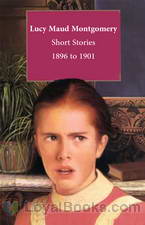 Lucy Maud Montgomery Short Stories, 1896 to 1901
Lucy Maud Montgomery Short Stories, 1896 to 1901
Stories from 1896 to 1901. Lucy Maud Montgomery was born at Clifton (now New London), Prince Edward Island, Canada, on November 30, 1874. She achieved international fame in her lifetime, putting Prince Edward Island and Canada on the world literary map. Best known for her "Anne of Green Gables" books, she was also a prolific writer of short stories and poetry. She published some 500 short stories and poems and twenty novels before her death in 1942. | |
 Further Chronicles of Avonlea
Further Chronicles of Avonlea
Further Chronicles of Avonlea is a collection of short stories by L.M. Montgomery and is a sequel to Chronicles of Avonlea. Published in 1920, it includes a number of stories relating to the inhabitants of the fictional Canadian village of Avonlea and its region, located on Prince Edward Island. The book was published without the permission of L.M. Montgomery, and was formed from stories she had decided not to publish in the earlier Chronicles of Avonlea. Montgomery sued her publishers, L.C. Page & Co, and won $18,000 in damages after a legal battle lasting nearly nine years. | |
By: Lyn Venable | |
|---|---|
 Homesick
Homesick
| |
 Grove of the Unborn
Grove of the Unborn
| |
By: M. (Arnaud) Berquin (1747-1791) | |
|---|---|
 The Looking-Glass for the Mind or Intellectual Mirror
The Looking-Glass for the Mind or Intellectual Mirror
| |
By: M. A. (Monette A.) Cummings (1914-) | |
|---|---|
 No Pets Allowed
No Pets Allowed
| |
By: M. C. Pease | |
|---|---|
 This One Problem
This One Problem
| |
By: M. I. Mayfield | |
|---|---|
 On Handling the Data
On Handling the Data
| |